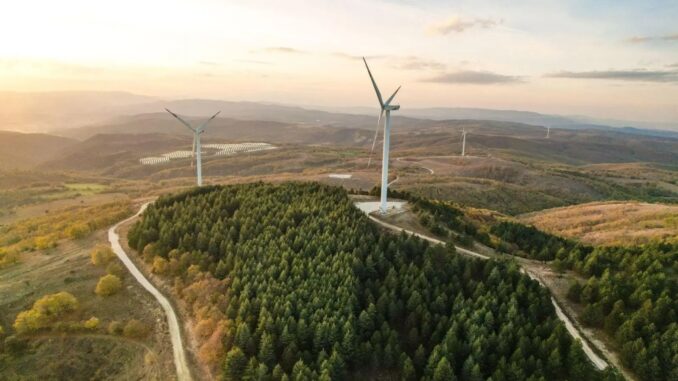
Biodiversity conservation is a critical aspect of environmental sustainability, and renewable energy plays an essential role in promoting it.
Here’s how renewable energy contributes to biodiversity conservation, as well as some considerations to ensure that renewable energy projects themselves do not negatively impact biodiversity:









Positive Impacts of Renewable Energy on Biodiversity
Conservation
1. Reduced Habitat Destruction:
Less Resource Extraction: Renewable energy sources like solar, wind, and geothermal do not require extensive mining or drilling operations, which are common in fossil fuel extraction and often lead to significant habitat destruction.
Decreased Pollution: By reducing the need for fossil fuel extraction, renewable energy helps minimize air, water, and soil pollution, which can have devastating effects on ecosystems and wildlife.
2. Lower Greenhouse Gas Emissions:
Climate Change Mitigation: Renewable energy reduces greenhouse gas emissions, helping to mitigate climate change. Climate change poses a major threat to biodiversity by altering habitats, disrupting food sources, and increasing the frequency of extreme weather events.
Ocean Acidification: Reducing carbon emissions helps slow ocean acidification, which negatively affects marine life, particularly organisms with calcium carbonate shells or skeletons, such as corals and mollusks.
3. Water Conservation:
Reduced Water Use: Solar PV and wind energy require minimal water for operation compared to conventional thermal power plants, which need large amounts of water for cooling. This conservation of water helps protect aquatic ecosystems and species that rely on freshwater resources.
Considerations for Minimizing Impact on Biodiversity
While renewable energy is generally positive for biodiversity, it is important to carefully plan and manage renewable energy projects to avoid potential negative impacts:
1. Site Selection and Planning:
Avoid Sensitive Areas: Renewable energy projects should avoid ecologically sensitive areas, such as wildlife habitats, migration routes, and protected areas. Environmental impact assessments (EIAs) can help identify suitable sites.
Habitat Fragmentation: Efforts should be made to minimize habitat fragmentation, which can disrupt animal movements and reduce biodiversity.
2. Impact on Wildlife:
Bird and Bat Collisions: Wind turbines can pose risks to birds and bats. Placing turbines away from major migration routes and using technologies like radar to detect and mitigate collisions can help reduce these impacts.
Marine Life: Offshore wind farms and tidal energy projects should be designed to minimize disturbances to marine life, including noise pollution and habitat disruption.
3. Land Use and Ecosystem Services:
Land Use Efficiency: Solar and wind farms should be designed to use land efficiently, potentially co-locating with agriculture (e.g., agrovoltaics) to maximize land use benefits.
Ecosystem Services: Renewable energy projects should consider maintaining or enhancing ecosystem services, such as pollination, water filtration, and soil health, which are critical for biodiversity.
4. Monitoring and Adaptive Management:
Ongoing Monitoring: Implementing monitoring programs to track the impact of renewable energy projects on local biodiversity can help identify and mitigate any adverse effects.
Adaptive Management: Adaptive management practices should be employed to adjust operations based on monitoring results and emerging scientific knowledge.
Case Studies and Best Practices
Agrovoltaics: Combining solar energy production with agriculture allows for dual land use, providing renewable energy while maintaining agricultural productivity and habitat for pollinators.
Wind Turbine Placement: In the United States, the Altamont Pass Wind Farm underwent reconfiguration to reduce bird fatalities, demonstrating the importance of adaptive management and monitoring.
Marine Protected Areas: Offshore wind farms in Europe are sometimes located within marine protected areas, designed to balance renewable energy production with the conservation of marine biodiversity.
Conclusion
Renewable energy has the potential to significantly contribute to biodiversity conservation by reducing the harmful environmental impacts associated with fossil fuels. However, careful planning, site selection, and management are essential to minimize potential negative impacts on wildlife and ecosystems. By adopting best practices and innovative solutions, renewable energy can be harnessed in a way that supports both climate goals and biodiversity conservation.

Leave a Reply